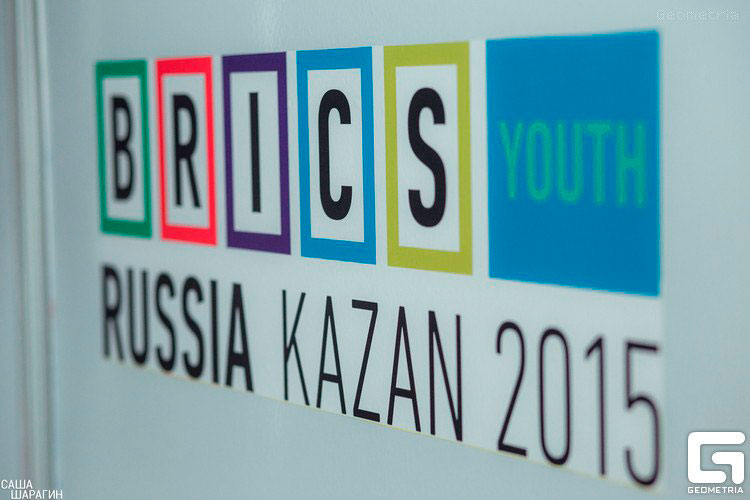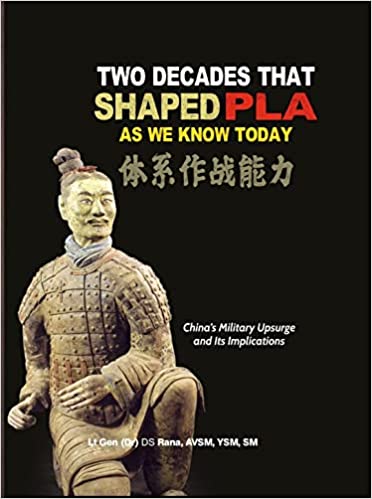At the 7th BRICS Summit held on July 8-9, 2015 in the Russian city of Ufa, the leaders of the BRICS member states came together and signed several joint agreements including the ‘Ufa Declaration’, the ‘Ufa Action Plan’, the ‘Strategy for BRICS Economic Partnership’ and the ‘Memorandum of Understanding (MOU) on the Creation of the Joint BRICS Website’. The Summit is mostly overlooked in mainstream media such as the BBC and CNN, due to the European and American preoccupation with the Greek crisis. Nevertheless, the Summit marked a significant move forward in terms of materializing ideas into tangible action plans. The recently published ‘MOU on Cooperation with the New Development Bank’ is one of the key examples that illustrate the intensified collaboration.
At the 7th BRICS Summit held on July 8-9, 2015 in the Russian city of Ufa, the leaders of the BRICS member states came together and signed several joint agreements including the ‘Ufa Declaration’, the ‘Ufa Action Plan’, the ‘Strategy for BRICS Economic Partnership’ and the ‘Memorandum of Understanding (MOU) on the Creation of the Joint BRICS Website’. The Summit is mostly overlooked in mainstream media such as the BBC and CNN, due to the European and American preoccupation with the Greek crisis. Nevertheless, the Summit marked a significant move forward in terms of materializing ideas into tangible action plans. The recently published ‘MOU on Cooperation with the New Development Bank’ is one of the key examples that illustrate the intensified collaboration.
Due to the persistence of stories in academic articles with respect to BRICS as a new actor in the arena of global governance, the following does apply: “Projecting an accepted strategic narrative of a new world order will be key to whether this current period of transition can remain largely peaceful.” [1] In terms of strategic narratives, it would be beneficial for the BRICS to have a pro-active approach to shape its media image internationally. With the recently created ‘MOU on the Creation of the Joint BRICS Website’, BRICS has made a step in the right direction in terms of public relations. However, the document raises a few questions with respect to language and accessibility. One of the key aspects in this MOU is the module of the BRICS Official Documents Archive. The MOU does not clearly state if the same documents will be translated into each Member State’s language or if the archive will host a variety of different articles. In the latter case, translation of all documents into English would generate a bigger impact. Contributing to a fair and democratic world and developing inclusive political and economic partnerships can only be viable when it occurs through mutual understanding. BRICS should therefore actively shape the narratives surrounding this current period of transition.
While looking specifically at Physical Connectivity projects, as defined in the priority areas for cooperation in the ‘Strategy for BRICS Economic Partnership’, great opportunities lie ahead for BRICS in terms of infrastructure development, transportation and logistics systems, communication infrastructure, information and telecommunication technologies. The current state of affairs in the Asian region illustrate intensified discussion and possible partnerships among the different countries; among others the recent Shanghai Cooperation Organization Summit in Ufa, India’s Prime Minister Modi’s visit to Central Asia, the various agreements on energy, trade and finance signed between President Putin and President Xi in May this year, the developments of the Asian Infrastructure Investment Bank and the advances made with respect to the Silk Road Economic Belt and 21st Century Maritime Silk Road Initiative. Collaboration on Physical Connectivity projects brings challenges both in the substantive as well as symbolical realms. In terms of substantive issues, these projects must face pragmatic realities in terms of project design, implementation and continued maintenance. Although Physical Connectivity projects are not the only priority area of collaboration that the New Development Bank will focus on, it certainly has a lot of merit in terms of feasibility. The construction of roads and railways will encounter less difficulty than joint agreements on human rights, trade or international financial institutional reform will do. While the individual states should still formally acknowledge which projects they like to put forward, they are potentially subject to criticism if not executed appropriately.
One can distinguish three types of strategic narratives; these include system narratives, identity narratives and issue narratives. System narratives are about the nature of the structures of international affairs. Identity narratives are about the identities of actors in international affairs that are in a process of constant negotiation and contestation. Issue narratives are strategic in the sense of seeking to shape the terrain on which policy discussions take place. [2]
Collaboration on the area of Physical Connectivity resonates on all these three types of narratives within the public understanding of international relations. However, all three narratives are receptive to negotiation. The collaboration of BRICS will be understood primarily through its actions. Due to the complex media ecology that we live in, the BRICS bloc does not control its media image internationally. Moreover, a common BRICS media strategy does not exist yet. Unfortunately if BRICS is misunderstood in terms of its vision and action plans towards Physical Connectivity, it is unlikely to realize its full capacity.
With respect to system narratives, the BRICS can become a comprehensive and powerful bloc of countries when they are effectively connected through infrastructure and communication networks. If collaboration on connectivity is successful among the Member States, with support of the New Development Bank as a healthy addition to the international financial system, the BRICS’ image will improve substantially. While ‘integration’ is a discourse that BRICS as a collective actor does not aspire to, it might overcome the position of being merely a “strong opposition”. It has the possibility to evolve into a new norm setter in terms of global affairs.
At the level of identity narratives, the actors (the BRICS member states) are constantly subjected to the process of negotiation and contestation. While the differences between these five countries have been subject to multiple discussions, it might be more useful to look at their common aspirations. Their collective ambition is to build successful political and economic partnerships wherever possible. Success rates, healthy competition, accountability and sustainable development are better key indicators than a shared vision on ideology, norms and customs. If these infrastructure projects are genuinely implemented among the Member States, trust will overcome other concerns. While narratives of sustainable or accountable collaboration might be found at the top of the political and economic agenda, realpolitik might not materialize similarly. Take for example the following case: the Chinese government is developing a new railway from Brazil to Peru. Narratives of sustainable development are crucial for fostering positive national and international imagery related to large-scale infrastructure projects. If there is no collaboration of the Chinese executors with local businesses, actual training of local people or adoption of a long-term vision for its operation and actual maintenance, the railway will deteriorate over time. In this situation, narratives could fail to correspond strategically to the best interests of the nation involved. This infrastructure venture is receptive to a “Made in China” image; an unfavourable stereotype for Chinese consumer products. Although agreements frequently reassign accountability, perceptions emerge between actual policy and what the experiences of the local people are. And it is the perception or reputation that is hard to build and easy to lose. Productive collaboration between the Member States depends on positive narratives of the nations involved.
With respect to issue narratives, BRICS should aim for strategic narratives that illustrate fruitful collaboration and win-win partnerships. Crucial here is the coexistence of development in Physical Connectivity with other policies and areas of collaboration. Moreover, BRICS should recognize the actual challenges in a particular area; for example the tensions existing at the Sino-Indian border and the Sino-Russian border. Consent from local people for new policies is crucial for issue narratives to be in BRICS’ favour in the long-term. Issue narratives have the most resonance at the local, mass level because of the visible and measurable impact. Policies should acknowledge the local experiences on issues of collaboration to address future concerns appropriately. Holistic catchwords such as sustainability and inclusiveness should be broken down in real and concrete procedures to foster a long-term positive media image.
The BRICS’ narratives are primarily generated through its actions. While the BRICS Summits are a good photo opportunity to shake hands and whereas the ‘Ufa Declaration’ and ‘Ufa Action Plan’ look very promising; there is room for improvement in terms of media output despite the complex media ecology as previously noted. The ‘First BRICS Youth Summit 2015 Action Plan’ also acknowledges the role of new media and traditional media and proposes actions of cooperation on this matter including the formation of a BRICS TV Channel and BRICS News Agency. However, lacking the kind of institutionalization these incentives require, we should in all probability first await the inauguration of the New Development Bank before any other kind of development takes place.
Therefore, an improved BRICS media image relies on the appropriate actions accounted for at all three narrative levels. With BRICS’ current collective efforts of establishing the New Development Bank, the strategic narratives concerning the bank’s role within the international financial order (system), each Member States’ rights and responsibilities (identity) and the adopted coordinated steps (issue) will materialize and transform over time. The BRICS should actively shape and share its intention with respect to all three narratives for a positive long-term outcome.
[1] Miskimmon, Alister. (2014). Strategic Narratives Communication Power and the New World Order. In B. O''Loughlin & L. Roselle (Eds.). Hoboken: Taylor and Francis.
[2] Ibid.



.jpg)


